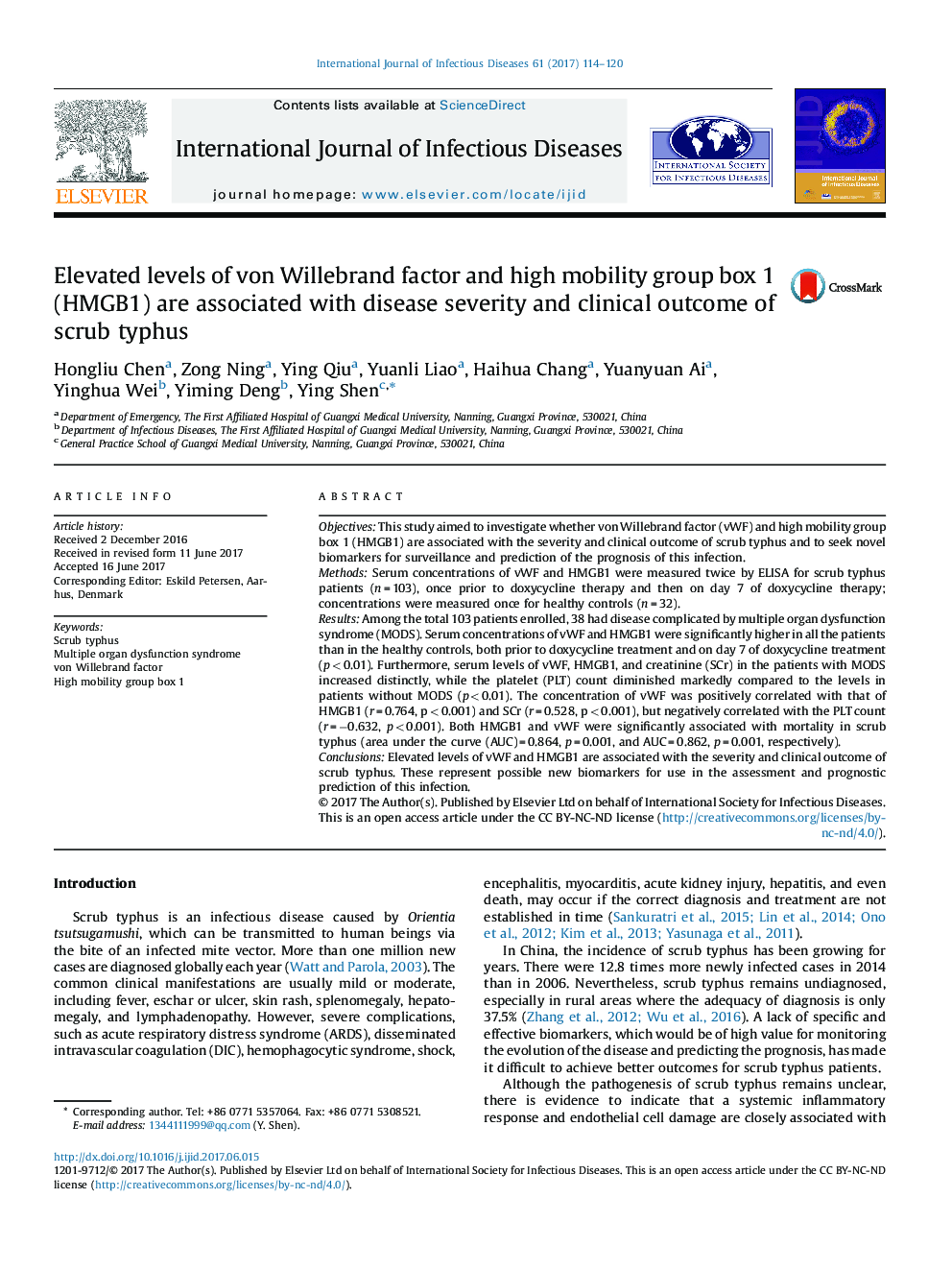| Article ID | Journal | Published Year | Pages | File Type |
|---|---|---|---|---|
| 5667393 | International Journal of Infectious Diseases | 2017 | 7 Pages |
â¢von Willebrand factor (vWF) and high mobility group box 1 (HMGB1) significantly increase in scrub typhus patients and even increase to a larger extent in scrub typhus patients with multiple organ dysfunction syndrome (MODS).â¢Both vWF and HMGB1 are significantly associated with the mortality of scrub typhus.â¢vWF and HMGB1 are potential predictors of the severity and outcome of scrub typhus.
ObjectivesThis study aimed to investigate whether von Willebrand factor (vWF) and high mobility group box 1 (HMGB1) are associated with the severity and clinical outcome of scrub typhus and to seek novel biomarkers for surveillance and prediction of the prognosis of this infection.MethodsSerum concentrations of vWF and HMGB1 were measured twice by ELISA for scrub typhus patients (n = 103), once prior to doxycycline therapy and then on day 7 of doxycycline therapy; concentrations were measured once for healthy controls (n = 32).ResultsAmong the total 103 patients enrolled, 38 had disease complicated by multiple organ dysfunction syndrome (MODS). Serum concentrations of vWF and HMGB1 were significantly higher in all the patients than in the healthy controls, both prior to doxycycline treatment and on day 7 of doxycycline treatment (p < 0.01). Furthermore, serum levels of vWF, HMGB1, and creatinine (SCr) in the patients with MODS increased distinctly, while the platelet (PLT) count diminished markedly compared to the levels in patients without MODS (p < 0.01). The concentration of vWF was positively correlated with that of HMGB1 (r = 0.764, p < 0.001) and SCr (r = 0.528, p < 0.001), but negatively correlated with the PLT count (r = â0.632, p < 0.001). Both HMGB1 and vWF were significantly associated with mortality in scrub typhus (area under the curve (AUC) = 0.864, p = 0.001, and AUC = 0.862, p = 0.001, respectively).ConclusionsElevated levels of vWF and HMGB1 are associated with the severity and clinical outcome of scrub typhus. These represent possible new biomarkers for use in the assessment and prognostic prediction of this infection.
